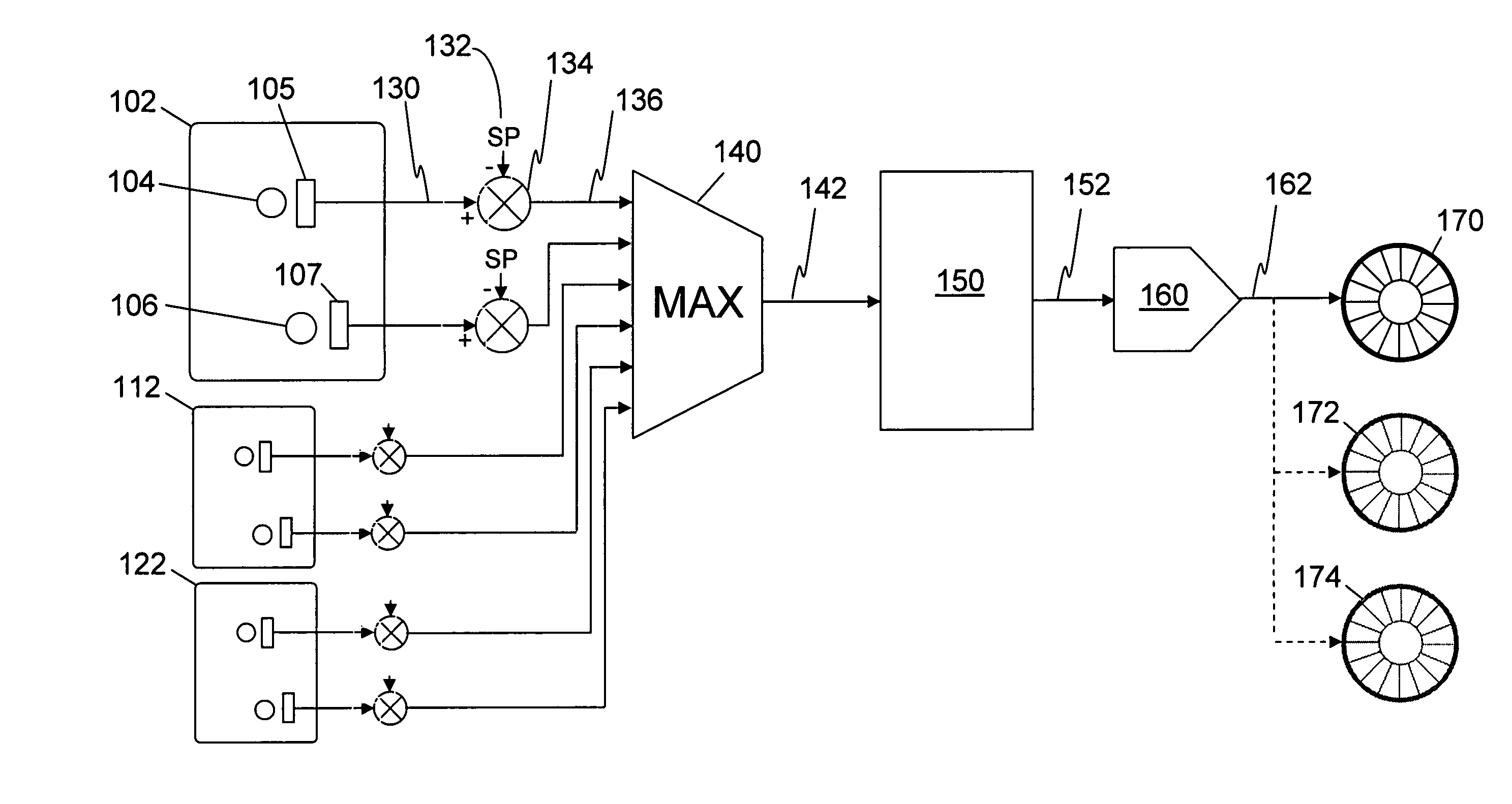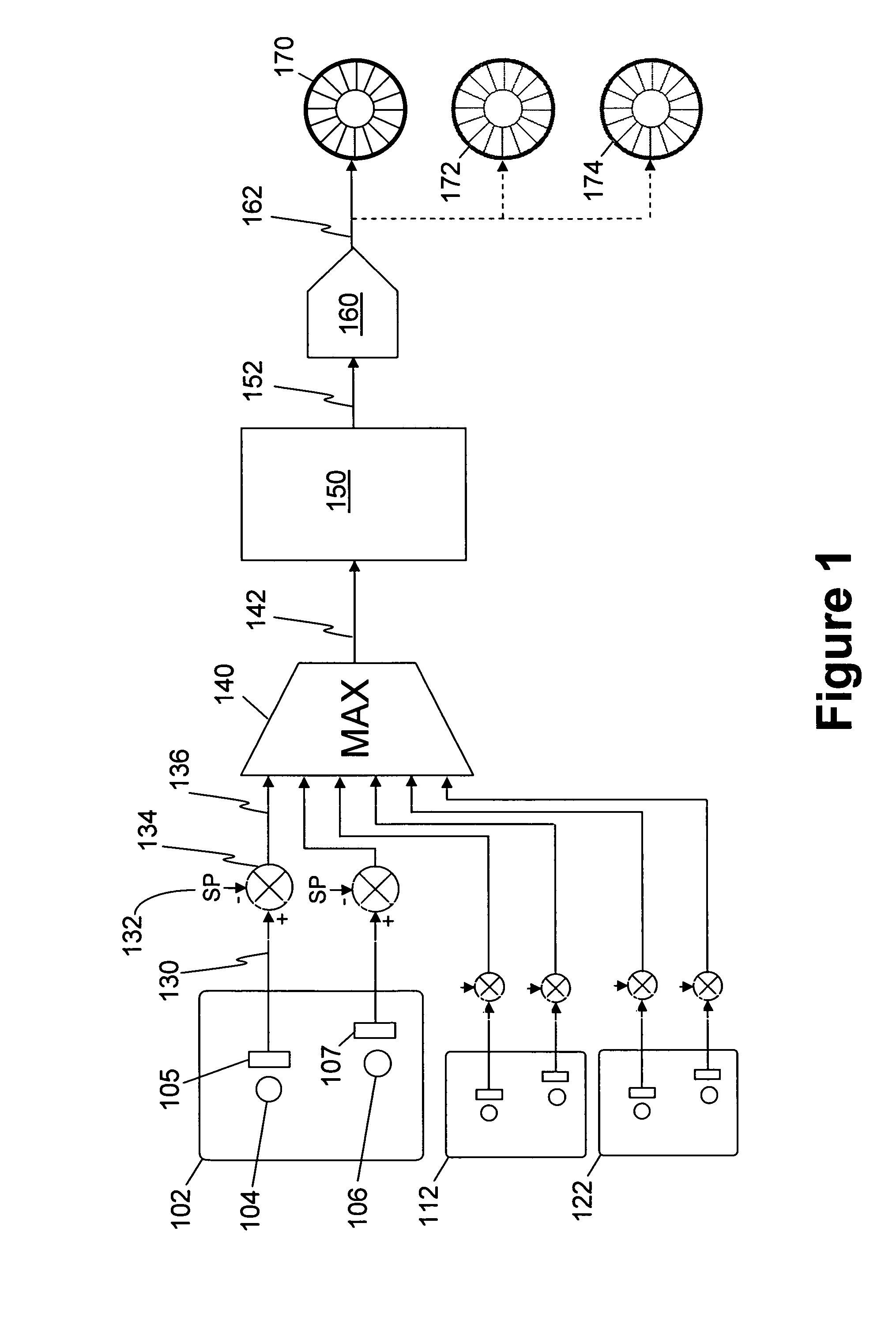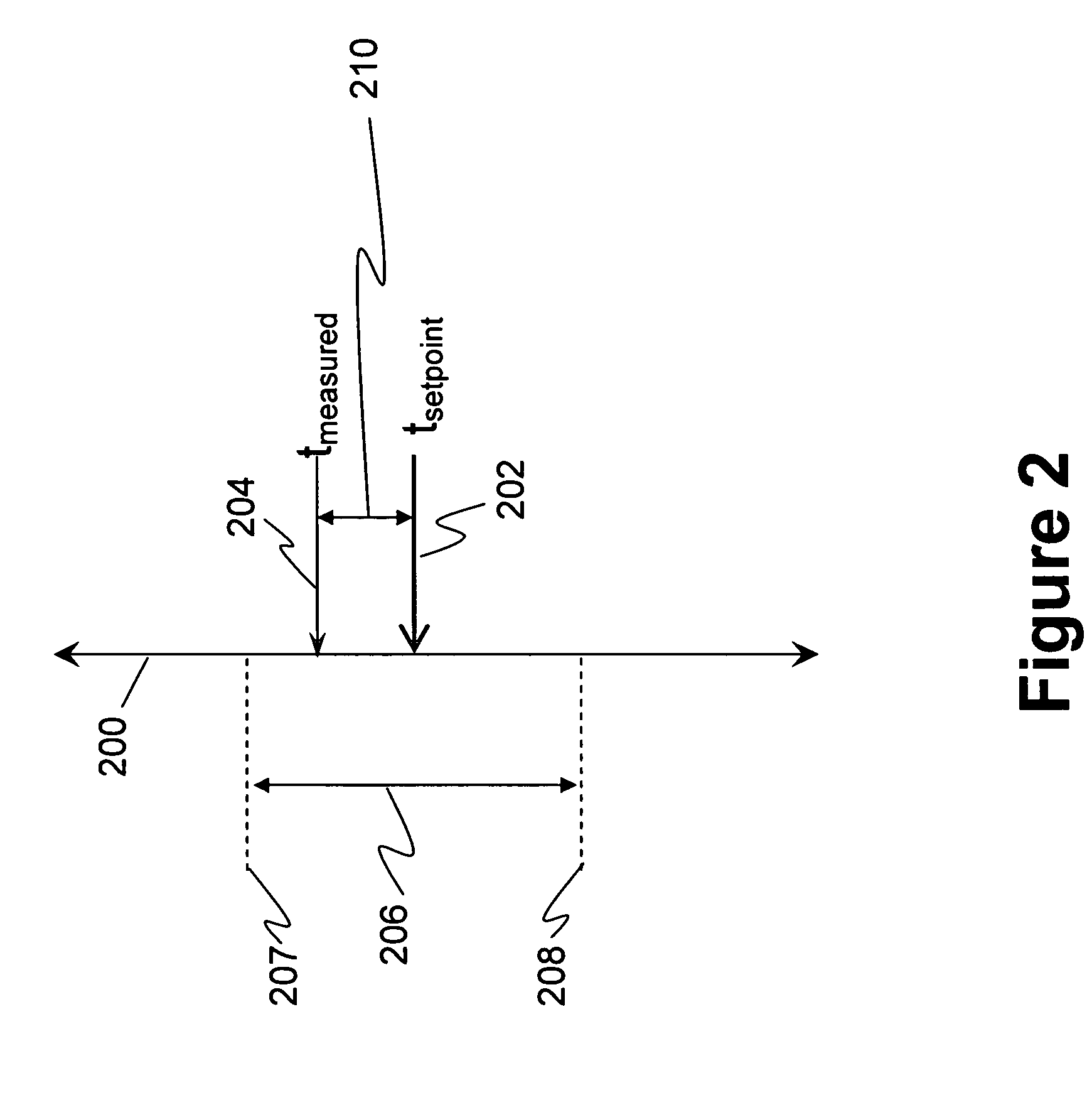Acoustic noise reduction using fan speed control
a technology of fan speed control and acoustic noise reduction, which is applied in the direction of motor/generator/converter stopper, dynamo-electric converter control, ventilation system, etc., can solve the problems of low fan speed and associated noise level, and achieve the effect of reducing aerodynamic acoustic noise, reducing maximum error, and dampening controller response to error variation
- Summary
- Abstract
- Description
- Claims
- Application Information
AI Technical Summary
Benefits of technology
Problems solved by technology
Method used
Image
Examples
Embodiment Construction
[0022]Referring to FIG. 1 there may be seen a fan control system according to an embodiment of the invention. Electronic equipment circuit board 102 has temperature sensitive electronic components 104 and 106. In close proximity to components 104 and 106 are respective temperature measuring devices 105 and 107. These devices typically comprise temperature measurement integrated circuits which provide a digital output indicating the temperature. A temperature resolution of 0.5° C. provides a satisfactory performance. The temperature output of measurement device 105 is communicated at 130 to a differencer 134. Communication 130 may be a dedicated signalling line or a common bus. Differencer 134 also accepts setpoint value 132 and operates by determining the difference between the temperature communicated at 130 and setpoint value 132 to generate an error value 136. The error value 136 is provided to a maximum error determining means 140.
[0023]As may be seen in FIG. 1, further electron...
PUM
 Login to View More
Login to View More Abstract
Description
Claims
Application Information
 Login to View More
Login to View More - R&D
- Intellectual Property
- Life Sciences
- Materials
- Tech Scout
- Unparalleled Data Quality
- Higher Quality Content
- 60% Fewer Hallucinations
Browse by: Latest US Patents, China's latest patents, Technical Efficacy Thesaurus, Application Domain, Technology Topic, Popular Technical Reports.
© 2025 PatSnap. All rights reserved.Legal|Privacy policy|Modern Slavery Act Transparency Statement|Sitemap|About US| Contact US: help@patsnap.com



